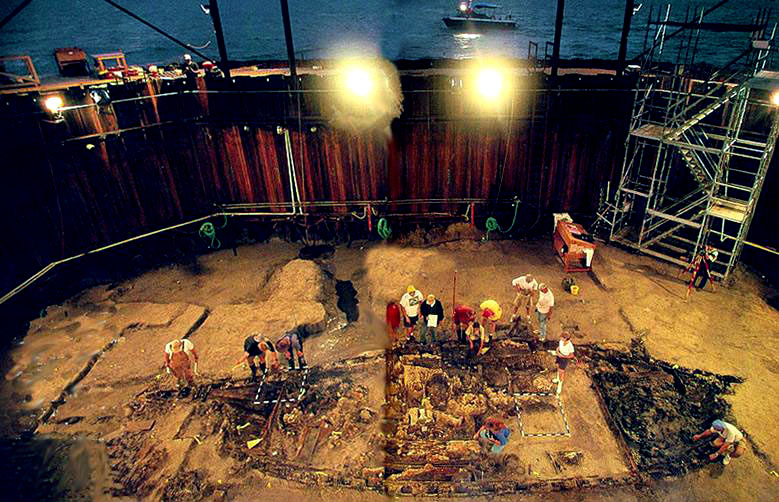300-Year-Old Ship From Voyage of La Salle Restored
Conservators and students at Texas A&M University have finally finished a two-decade effort to restore the wreck of La Belle, a French sailing vessel which grounded and sank in Matagorda Bay over 300 years ago.
Dr. Peter Fix, a conservator with the university's Conservation Research Laboratory, managed the project from early stages to completion. “It’s been exciting, a huge headache and a huge frustration at times, but I love old ships and in particular this one,” said Fix.
La Belle was one of four ships (with Le Joly, L'Aimable and St. Francois) in Robert de La Salle's ill-fated expedition of 1684. La Salle already had a successful career as an explorer: he had completed a phenomenal effort to survey the Upper Great Lakes and the Mississippi, traveling down river by canoe to what would become Louisiana. On his return to Europe, La Salle received royal backing for a new mission to the mouth of the Mississippi, and he departed France with his small fleet and 300 settlers. It did not proceed as planned: Spanish pirates seized the St. Francois while under way; the navigators found Texas rather than the Mississippi; the L'Aimable ran aground at Pass Cavallo, Matagorda Bay and broke up, with the loss of most of the colony's supplies; Le Joly returned to France with 120 aboard; and the La Belle went aground off Matagorda Island the next year, leaving the remaining party stranded in the New World. Almost all perished.
As the party had intended to explore the lower Mississippi, the 50-foot La Belle was designed with a shallow draft for coastal and riverine waters. "La Salle used the ship as a floating warehouse," said Fix. “When excavated, the archeological site was found full of merchandise . . . knives, axe heads, pottery, tiny glass beads, bottles and brass pins . . . clothing, combs, and even a signet ring were found, and also weaponry such as long guns, lead shot, sword parts and three bronze cannons, which were extraordinarily well preserved.”
The Texas Historical Commission found the wreck in the mid-1990s, and undertook a nine-month excavation and recovery of some 1.6 million individual items and components. La Belle herself is the most significant of these, and 125 people worked on her over a period of 17 years to bring the wreck back to a well-preserved, presentable whole.
 The excavation site (image courtesy Texas Beyond History)
The excavation site (image courtesy Texas Beyond History)
“La Belle’s timbers had become waterlogged and heavily degraded during the 300-year immersion in Matagorda Bay,” said Fix, and they had to be slowly dehydrated by freeze-drying in order to avoid distortion.
By treaty, La Belle and her associated artifacts are technically owned by France, Fix says, but Texas A&M has been permitted to retain them indefinitely.
